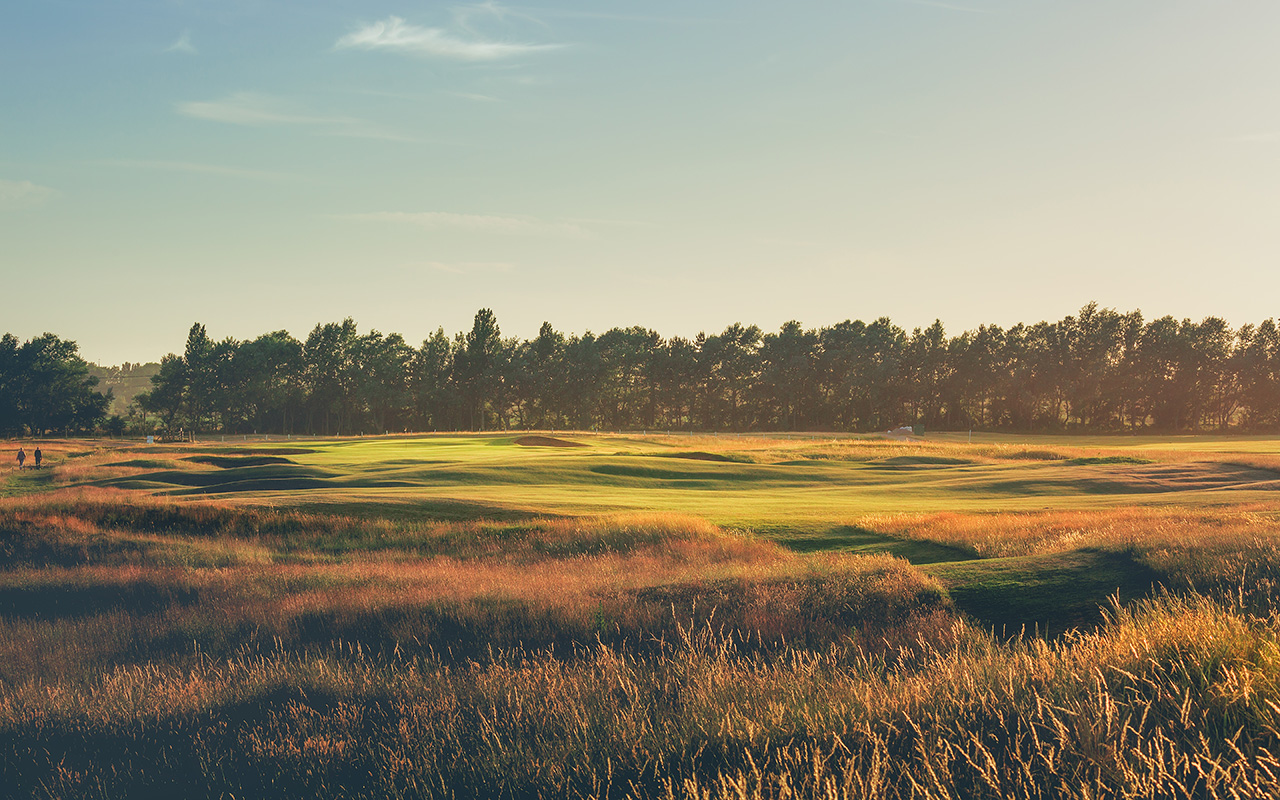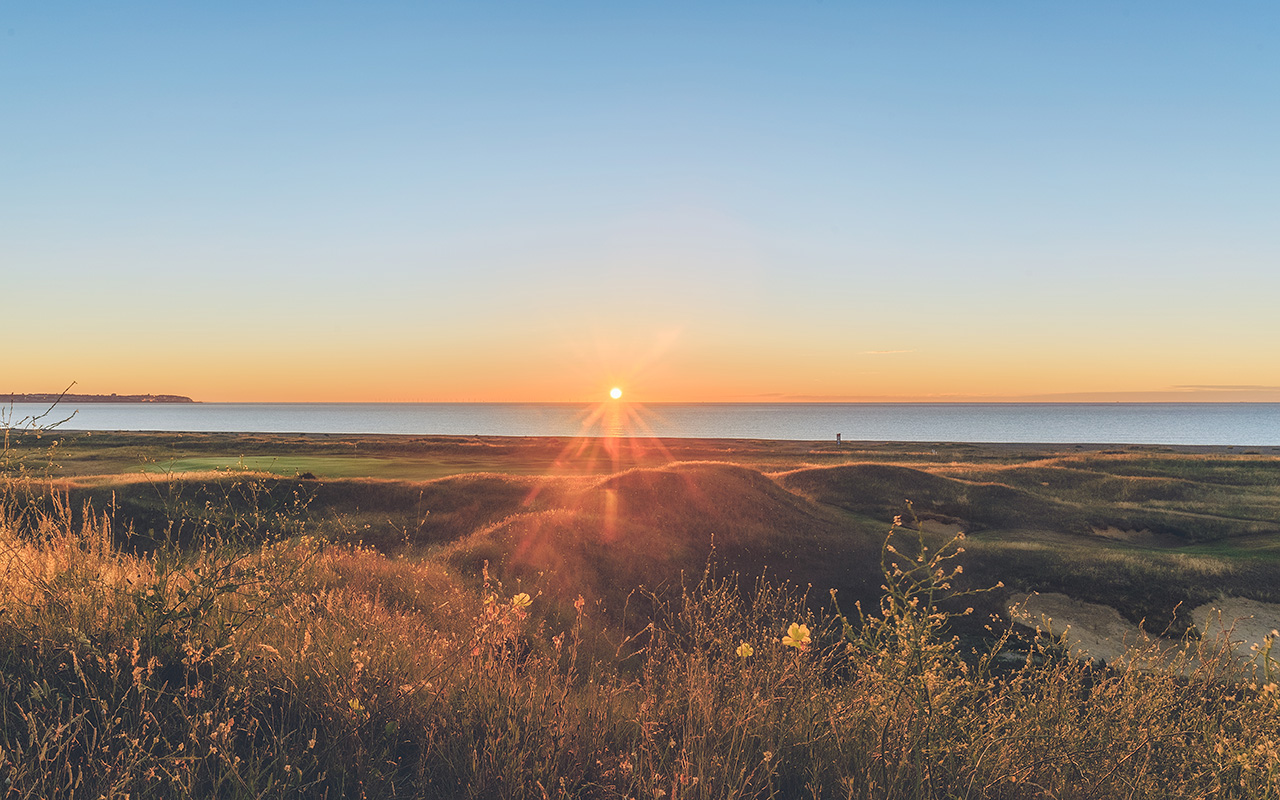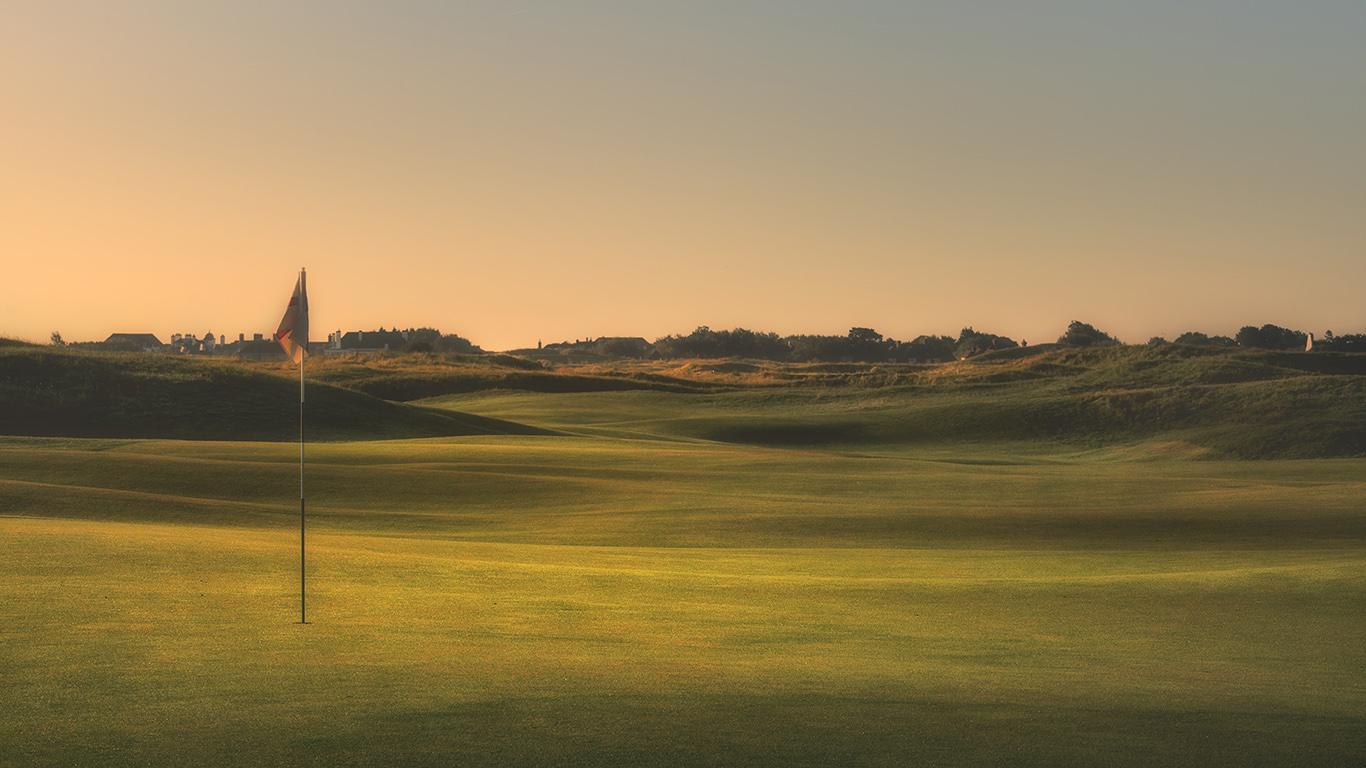All photos by Jason Livy, courtesy of Royal St. George’s Golf Club
This week, for the 15th time since 1894, the Open Championship will take place at Royal St. George’s Golf Club. The course was designed by Laidlaw Purves in 1887 on a beautiful, varied piece of duneland near Sandwich, England. While the routing has remained basically intact, the holes have been revised over the years by Alister MacKenzie, Frank Pennink, Donald Steel, and Mackenzie & Ebert, among others.
As we did last week for the Scottish Open at the Renaissance Club, we asked for architect Tom Doak’s thoughts on the course. The conversation below has been lightly edited for clarity.
You told me that Royal St. George’s is one of your favorites of the Open rota. Tell us a little about the course and what you like about it.
Tom Doak: When I lived in the UK in ’82 and ’83, Royal St. George’s was just coming back on the scene. They’d just had the Open there for the first time in like 30 years [32 years, to be exact—Ed.]. The course had been dismissed as being too blind and having too many weird bounces and funky short holes. Like the famous Sahara [3rd] hole that C.B. Macdonald liked so much—they changed it completely because it was an awkward length for modern pros and they couldn’t see where they were going.
So some of the course has been changed, but to me the piece of property has more variety than Troon and Carnoustie and Birkdale. There’s just a great variety of dunes. It’s got four- or five-foot up-and-down waves near the clubhouse on the 1st hole and the 18th hole. And that goes into 40-foot dunes on the far end, where the 6th and 4th and 5th holes are. It has everything from flattish ground with a bunch of little ripples to really steep and deep stuff.
-

The subtle movements of the 18th fairway at Royal St. George's. Photo: Jason Livy
-

The wilder duneland next to the 5th hole at Royal St. George's. Photo: Jason Livy
If Scotland has more low-profile land compared to Ireland, which has a lot of huge dunescapes, then Royal St. George’s has a little bit of both, right?
Doak: Yes, I think that’s a fair way of putting it.
And its proximity to London is really neat.
Doak: I’m sure from the R&A’s perspective that’s a great thing, getting all the money of London down there.
You know, it’s a bit of a hike from London. It’s an hour and a half to two hours to get out there, and it’s a tough place to access for the tournament. I mean, that’s a tiny village and the roads are small and difficult to navigate. So it’s surprisingly rural for being that close to London.
People are going to be able to watch something like 85 hours of the Open Championship this week. Do you have a few favorite holes at Royal St. George’s that viewers could focus on at 3 a.m.?
Doak: A lot of the most dramatic stuff is on the front nine, which in a normal tournament you wouldn’t see, but for the Open you will.
Right from the 1st hole, with that wavy fairway—that’s one of the holes that the tour pros don’t like because they can’t see all the undulations and they can’t tell which way the ball bounces. It’s hard to get a line off the tee, and then you might get a funky bounce left or right, which you don’t see when it lands. So they’re scared of that hole coming right out of the gate.
-

No. 1 at Royal St. George's. Photo: Jason Livy
-

No. 1 at Royal St. George's. Photo: Jason Livy
-

No. 1 at Royal St. George's. Photo: Jason Livy
-

No. 1 at Royal St. George's. Photo: Jason Livy
When you get to the far end of the golf course, No. 4, with the towering bunker in the face of the dune, that’s a long, scary par 4, even for the best players. And it’s got a small, severe green with like a 10-foot-deep bunker left-front of it. So that’s a very difficult hole by any standard.
-

No. 4 at Royal St. George's. Photo: Jason Livy
-

No. 4 at Royal St. George's. Photo: Jason Livy
-

No. 4 at Royal St. George's. Photo: Jason Livy
-

No. 4 at Royal St. George's. Photo: Jason Livy
The 5th is a really cool hole. It plays on the other side of the dune ridge, and you have to hit the ball in a certain place in the fairway to see between dunes and get a peek at the green. From the tee, it’s really hard to pick out where that spot would be because the fairway looks like a big, rough sea out there—just dips and big crests in the middle of the fairway.
-

No. 5 at Royal St. George's. Photo: Jason Livy
-

No. 5 at Royal St. George's. Photo: Jason Livy
-

No. 5 at Royal St. George's. Photo: Jason Livy
-

No. 5 at Royal St. George's. Photo: Jason Livy
The 6th is what’s left of the Maiden hole. The original hole, which was famous, played over the top of the dune to the left of the green, from somewhere on the 5th fairway. And they gave that up a long time ago to extend the 5th hole, and then played the 6th back where you can see the green from the tee. But it’s up against the very big dune feature, so it’s cool.
-

No. 6 at Royal St. George's. Photo: Jason Livy
-

No. 6 at Royal St. George's. Photo: Jason Livy
-

No. 6 at Royal St. George's. Photo: Jason Livy
The 9th green is another one. There’s some history of Alister MacKenzie having been involved a little bit there at some point, and I always figured if there was anything that was his, it was the 9th green. And that’s a wild-looking green. It just sits up, and it’s very undulating, falls off hard on the left into trouble, bunkers to the right, so you can’t it right, either. It’s not a really long hole, but it’s a scary approach shot.
-

No. 9 at Royal St. George's. Photo: Jason Livy
-

No. 9 at Royal St. George's. Photo: Jason Livy
-

No. 9 at Royal St. George's. Photo: Jason Livy
-

No. 9 at Royal St. George's. Photo: Jason Livy
I’ve always thought Sandwich has tremendous variety and it’s a beautiful place. I mean, if you’re not even playing golf, if you’re just wandering around the course, you can get up on big dunes and have views of the sea, which you don’t have on a lot of links courses.


 by
by 
